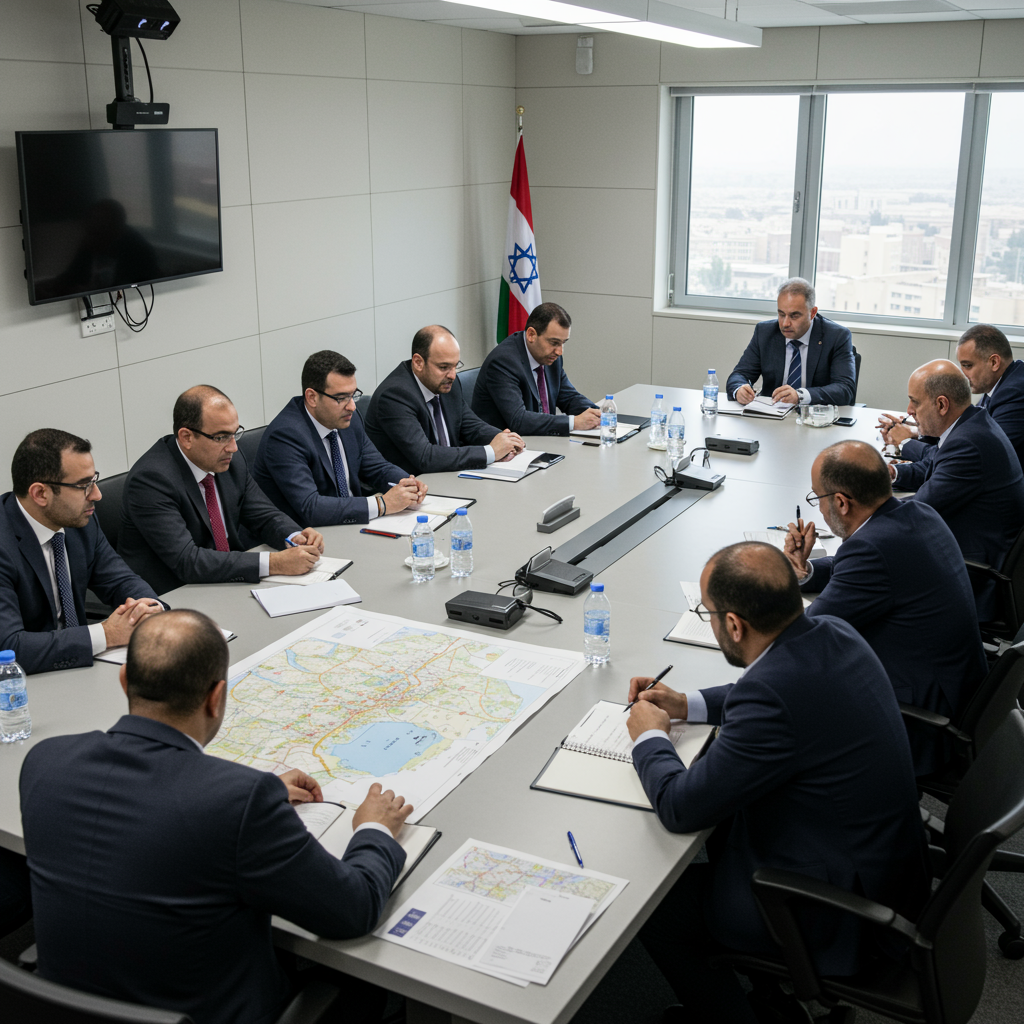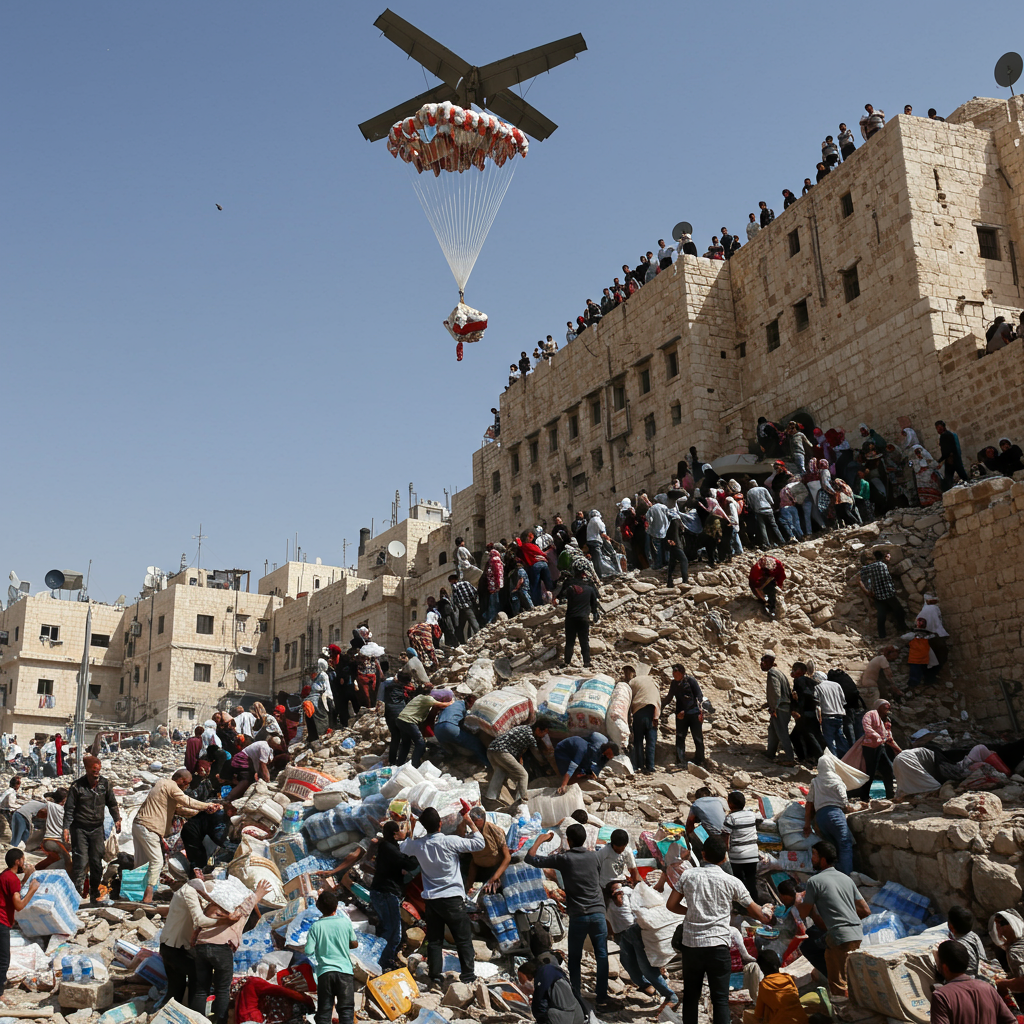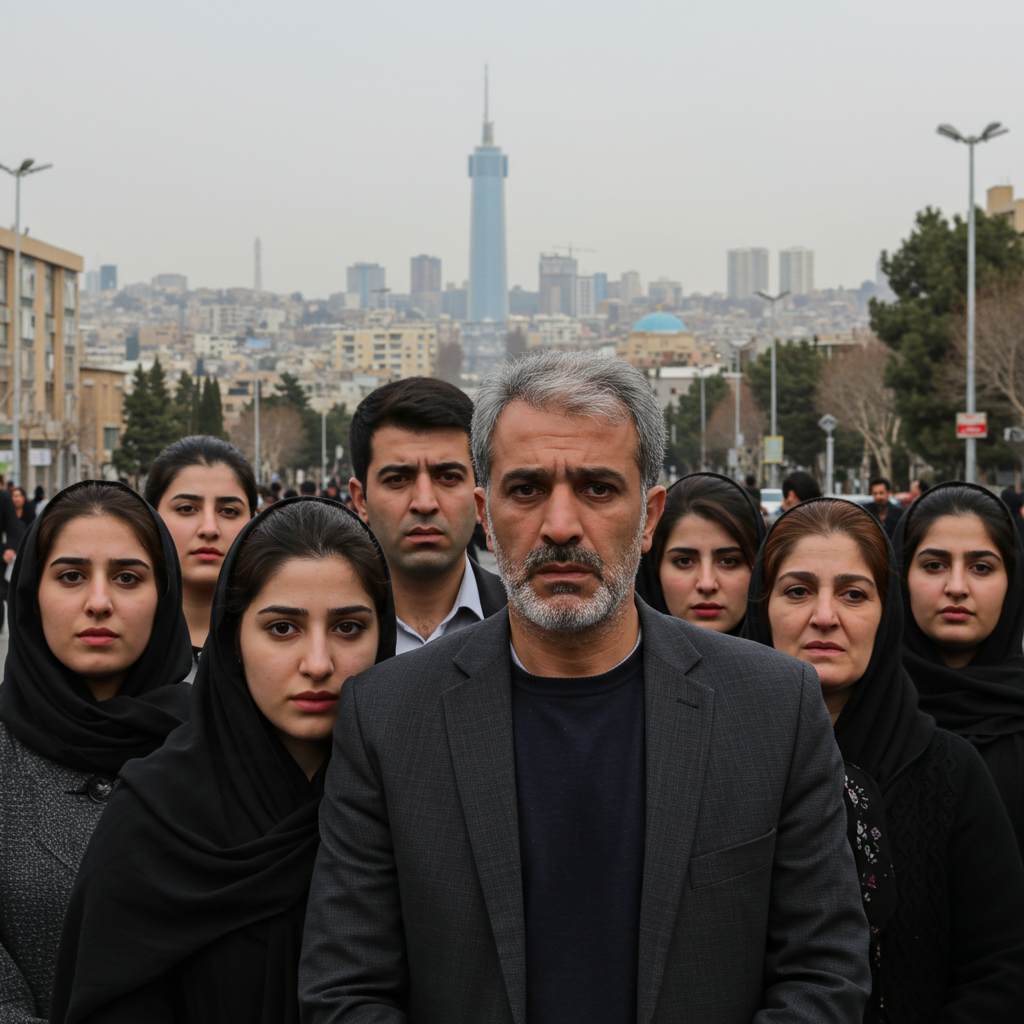Amidst intense international pressure, Hamas is actively deliberating a United States-backed proposal aimed at securing a ceasefire in the Gaza Strip. This critical stage in negotiations brings a glimmer of hope, even as significant challenges and widespread violence persist. The militant group’s response to the US framework is eagerly awaited by mediators and involved parties, marking a pivotal moment in the nearly two-year conflict.
Hamas officials are currently engaged in extensive discussions regarding the American-led ceasefire proposal. Sources close to the group indicate that leaders are considering acceptance. However, a core requirement remains: clear and robust guarantees that any temporary halt to fighting will conclusively lead to a permanent end to the war. Hamas leaders met recently to review the details and are consulting with other Palestinian factions before finalizing their official position. A statement early on Friday confirmed that their response would be submitted to mediators following these internal and inter-factional talks. The group faces considerable internal pressure, partly due to the severe impact of <a href="https://news.quantosei.com/2025/07/03/dozens-killed-in-gaza-as-israel-intensifies-bombardment-rescuers-say/” title=”Intensified Gaza Strikes: Dozens Killed Amid Crisis
**Word Count Check:** [Estimated word count will be calculated after generation]”>israeli military operations on its military leadership and fighters.
Across the negotiation table, Israel is also making preparations. A senior Israeli official, closely associated with Prime Minister Benjamin Netanyahu, has indicated that plans are ready to approve a ceasefire agreement. Another source familiar with the ongoing diplomatic efforts expects Hamas’s response to arrive by Friday. If Hamas’s reply is positive, an Israeli delegation is reportedly prepared to join indirect talks. These discussions would aim to solidify and finalize the details of the proposed agreement.
Former US President Donald Trump has also weighed in on the developing situation. He suggested that Hamas’s decision on what he termed a “final proposal” for a Gaza ceasefire would likely become known within 24 hours. Trump also mentioned discussions with Saudi Arabia concerning a potential expansion of the Abraham Accords. These normalization agreements between Israel and several Gulf countries were brokered during his previous administration. When questioned recently about his stance on Gaza, Trump stated his primary concern was for “the people of Gaza to be safe,” noting they have “gone through hell.” This contrasts with earlier, controversial ideas he reportedly floated about potentially relocating Gazans or the US taking control of the territory, transforming it into a “Riviera.” More recently, Steve Witkoff, identified as Trump’s envoy, is reportedly considering visiting Gaza as part of efforts to maintain the ceasefire and address long-term stability, underscoring the fragility of the potential agreement. Witkoff’s focus includes managing potential “rogue incidents” that could derail the peace effort and improving the lives of Gazans to prevent further unrest.
Escalating Violence Amidst Peace Prospects
Tragically, even as ceasefire talks progress, violence in Gaza has continued unabated and even escalated. Recent days have seen some of the deadliest and most intense bombardments in months. Israeli attacks on Thursday resulted in at least 73 Palestinian deaths. This grim toll included 15 fatalities in a strike on a school. Reports also cited 38 people killed while waiting for humanitarian aid at three distinct locations in central and southern Gaza. A child was also killed by a drone strike in Jabalia in the north.
Overall, this week’s intense Israeli offensive, involving warships and artillery, may have claimed around 300 lives. Thousands more people have been injured. These attacks occurred before the anticipated ceasefire discussions were set to begin.
Healthcare workers have also been disproportionately targeted. Dr. Marwan al-Sultan, a highly respected cardiologist and director of Gaza’s Indonesian hospital, was killed on Thursday. Several members of his family also died in the same attack. According to Healthcare Workers Watch (HWW), a Palestinian medical organization, Dr. al-Sultan was the 70th healthcare worker killed by Israeli attacks in the preceding 50 days alone.
Humanitarian Crisis and International Response
The humanitarian crisis in Gaza remains dire. The United Nations has warned that all of Gaza’s population faces a risk of famine. A senior UN official tragically described the situation as “forced starvation,” suggesting it could constitute a war crime. Aid distribution faces immense obstacles. The UN’s humanitarian office accused Israel of blocking most aid, especially ready-to-eat food. Only 600 of 900 requested aid trucks were reportedly permitted towards the border due to bureaucratic and security hurdles.
Medical charity Doctors Without Borders (MSF) has harshly criticized the current aid distribution methods involving the US and Israel. They labeled the plans “ineffective” and “disastrous.” MSF reported dozens injured during chaotic aid distributions in late May. They also raised concerns that aid might be used as a tool for displacement. Conflicting reports exist regarding injuries during aid distribution; the UN Human Rights Office reported nearly 50 injured at one site, while others denied any injuries.
The UN’s Palestinian refugee agency (UNRWA) stated it has substantial aid supplies in Jordan ready for delivery. These supplies could sustain over 200,000 people for a month. UNRWA has called for an “unhindered, uninterrupted flow of supplies” into Gaza. Israeli protesters have also complicated aid efforts. They have gathered to block aid trucks entering Gaza via the Kerem Shalom crossing, demanding the return of hostages before allowing supplies through.
Israel’s foreign ministry has denied claims of a humanitarian blockade. They assert that aid is facilitated through multiple channels. The ministry has pushed back against criticism, particularly from French President Macron, who called for tougher action against Israel over the crisis. Israel states its recent limited aid allowance, after an almost three-month restriction, aimed to pressure Hamas regarding the remaining hostages. Reports suggest about 58 hostages are still held, with at least 20 believed to be alive.
Broader Regional and Political Context
Beyond the immediate ceasefire talks, several other significant developments are shaping the regional landscape.
Francesca Albanese, the UN special rapporteur on human rights in the occupied Palestinian territories, has issued a strong call for international action. She urged sanctions and an arms embargo against Israel. Her report to the UN Human Rights Council on Thursday also called for holding global corporations accountable. Albanese accused these companies of “profiting from genocide” in Gaza, highlighting worldwide corporate involvement in supporting Israel’s military actions. This call comes amidst Israel’s recent approval of 22 new settlements in the West Bank, a move widely seen as illegal under international law. Israeli Defence Minister Israel Katz reportedly linked this settlement expansion to a message for French President Macron, who had criticized Israel’s handling of the Gaza humanitarian crisis.
Iran has affirmed its commitment to the nuclear Non-Proliferation Treaty (NPT). Foreign Minister Abbas Araghchi stated Iran remains dedicated to the NPT and its Safeguards Agreement. However, Araghchi also sharply criticized Germany. He accused Berlin of “malice” following German criticism of Tehran’s decision to suspend cooperation with the UN nuclear watchdog. Araghchi argued that Germany’s support for “bombing of Iran” demonstrated hostility. This diplomatic spat occurs alongside domestic events in Iran. A state funeral was held in Tehran for military commanders, nuclear scientists, and civilians killed in recent Israeli strikes. Hundreds of thousands attended, with reports of “Death to America” chants. High-ranking officials, including President Masoud Pezeshkian and IRGC head Hossein Salami, were present.
Meanwhile, the Israeli army (IDF) reported conducting a drone strike in southern Lebanon. The strike killed Hassan Mohammad Hamoudi, identified as a Hezbollah commander. The IDF stated Hamoudi commanded Hezbollah’s anti-tank missile unit in the Bint Jbeil area and was responsible for numerous attacks on Israel.
In US politics, a Republican-controlled Senate recently blocked a resolution. This resolution aimed to require Donald Trump to seek congressional approval for further hostilities against Iran. The vote was 53-47 against the measure. Concurrently, Trump reiterated his willingness to potentially attack Iran’s nuclear sites in the future if he deemed it necessary.
Internal Israeli debate also continues. Opposition leader Yair Golan argued that Israel’s biggest threat comes “from within.” He specifically cited settler violence. Golan referenced an incident where Israeli civilians allegedly attacked IDF soldiers in the West Bank using stones and physical assault. He described this as a “dangerous current” affecting the government. The IDF confirmed the incident and arrests were made.
Finally, Iran’s state media has reported reopening central and western airspace. This allows international flights to resume after restrictions following the recent conflict with Israel.
Proposed Deal Points and Sticking Points
Details of the US proposal, though unconfirmed, suggest a multi-phase approach. Reports via Reuters outlined a potential 60-day pause in fighting. The first week could see the release of 28 Israeli hostages (both alive and dead). This would be followed by 30 more hostages once a permanent ceasefire is implemented. In exchange, Israel might release 1,236 Palestinian prisoners and the remains of 180 deceased Palestinians. The proposal also reportedly includes provisions for significantly increased humanitarian aid via the UN and other agencies.
However, key sticking points persist. Hamas insists on a firm US guarantee that the temporary pause will lead to a permanent end to the war. They also demand a complete withdrawal of Israeli troops from Gaza. Furthermore, Hamas seeks a return to the previous UN-overseen aid mechanism, ensuring a substantial surge of supplies without current restrictions. These demands highlight “wide gaps” between the sides. Mediators reportedly attempted “constructive ambiguity,” but the implementation heavily relies on a vaguely worded personal commitment from US President Trump. Both sides reportedly wish to avoid blame if this peace initiative fails.
A central concern for the US envoy, Steve Witkoff, is that Phase 1 must succeed for Phase 2 (release of more hostages, withdrawal) to proceed. Hostage families remain anxious, particularly about whether their loved ones are included in the initial or later phases. The potential release of American hostages, like Keith Siegel, depends on the deal holding into its subsequent stages. The framework requires enough Palestinian prisoners to be available for exchange, which is a point of concern for some families.
Documentary Sheds Light on Gaza Medics
Adding another layer to the complex narrative is a controversy surrounding a documentary. The film, “Gaza: Doctors under Attack,” focuses on the overwhelming challenges faced by hospitals and medical staff in the territory. It depicts facilities being bombed and raided. The documentary’s executive producer, Ben de Pear, has accused the BBC of trying to prevent him and others from discussing the corporation’s decision not to broadcast the film. While the BBC dropped the program, it was eventually shown on Channel 4. De Pear alleged that the BBC used legal “gagging clauses” to silence discussion about the film’s journey to the screen.
Frequently Asked Questions
What is the latest status of the US-backed ceasefire talks for Gaza?
Hamas is currently conducting an in-depth review of the US-proposed ceasefire plan. Officials are discussing it internally and consulting with other Palestinian factions. They have stated they will submit their formal response to mediators after these talks conclude, potentially very soon. Israel is awaiting Hamas’s reply and is preparing to approve the deal and send a delegation for indirect talks if the response is positive.
What are the key demands and proposed terms in the Gaza ceasefire deal?
While unconfirmed, the US proposal reportedly includes a 60-day pause in fighting, phased exchanges of Israeli hostages for Palestinian prisoners and remains, and increased humanitarian aid. However, Hamas’s core demands include a guaranteed permanent end to the war, a full Israeli military withdrawal from Gaza, and a clear mechanism for aid delivery without restrictions. These points represent significant obstacles.
Beyond the ceasefire, what other key developments are impacting the Israel-Gaza situation?
Recent events include escalating Israeli military operations causing high casualties, particularly among civilians and healthcare workers; international calls for sanctions and arms embargoes on Israel; Iran’s statements on its nuclear program and regional tensions; a Hezbollah commander killed in Lebanon; and controversies surrounding aid access and reporting on the conflict, such as the documentary about Gaza medics.
In conclusion, the Middle East remains on edge as the fate of the US-backed ceasefire plan hangs in the balance. Hamas’s forthcoming response is expected to determine the immediate path forward. While diplomatic efforts continue, the reality on the ground in Gaza remains one of severe violence and humanitarian crisis. The outcome of these crucial negotiations will significantly impact the lives of millions and the wider regional stability.
Word Count Check: 1335




